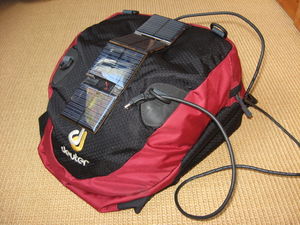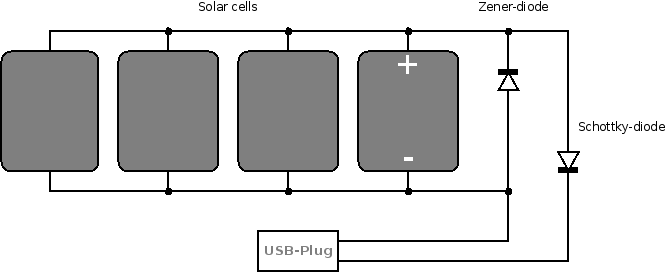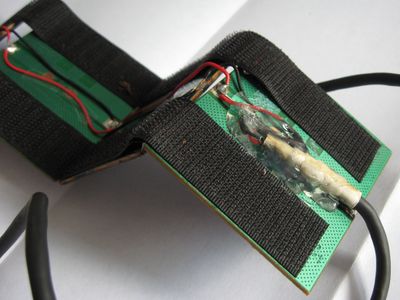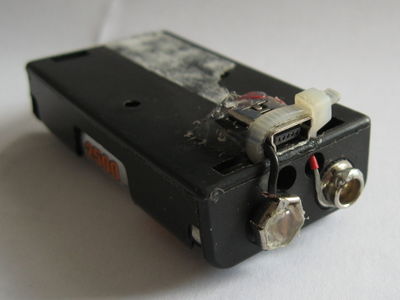User:Fröstel/Solar panel
I build myself a solar panel to power my GPS and camera during my last 4 weeks of hiking in Sweden. The area was very rural and there where only few occasions (~ once a week) when I had access to electricity. But I didn't want to carry lots of rechargable batteries plus a charger. So I decided to go solar.
But all solar panels, commercially available are pretty expensive (>60€). Additionally those models, which would be able to power my Vista HCx were so heavy, that I could also take batteries. There are also a lot of cheap products around, but most of them have such unrealistic specs, that I didn't seriously consider them.
So I build my own solar panel for less than 30€! Trying to figure out the best set up took a while, but rebuilding it takes less than one hour.
What you need
- 4 x Solar cell 5V/81mA (available at Conrad for 7€, 19 13 21 - 62)
- 1 x Schottky-diode (because of the higher efficiency, a normal diode would also work)
- 1 x Z-diode 5,6V 500mW (like 16 82 84 - 24)
- some wires and solder
- a USB-Cable (mini-B)
Additionally you'll need the standard tools, like a soldering iron, diagonal pliers, etc.
Electrical Assembly
As shown in the schematic, the cells are connected in parallel order. The Zener-diode serves as a primitive surge-protector which will bypass the whole circuit when the voltage exceeds 5.6 V. The Schottky-diode protects the cells from current flowing back into them.
In order to connect the whole assembly to the eTrex I took an old USB-Cable mini-B <-> A-Plug and cut off the A-Plug. Connecting the open wires to the cells is simple, because the wires are mostly color-coded, i.e. connect the red one to plus and the black one to minus.
Mechanical assembly
I wanted my panel to be small, lightweight and robust. In addition it should be mounted on top ob my rucksack with velcro-tape. So I bought some adhesive velcro and used it to neatly connect the cells, leaving enough space between the cells to fold the whole panel together. I also put some transaprent scotch-tape on top of the cells to add further strength, but this, in retrospective, was unnecessary.
Fixing the GPS itself to my rucksack was a bit tricky, because the USB-plug stick out of it's back. So I did two things, first I bend the plug a little by making it warm. Then I bought another holder, leaving enough space between the socket and the shoulder belt. It's available via Amazon (affiliate-link) and I'm very satisfied with it.
Self-made charger
Beware, this is ugly engineering!
To be able to charge the batteries of my cameras I also build a really primitive charger. Acutally it's no charger at all, just allows to plug to batteries to the panel, i.e. just a mechanical connector.
I bought a USB mini-B socket an glued it to a battery-jacket for two mignons (AA) something like 61 56 25-44.
The charging done with such a setup is of course brute-force, but doesn't waste any power for additional control electronics. I wouldn't permanently charge my batteries this way, but it's okay for me to pump a few more electrons into them while on vacation. To fully charge some 2500 mAh batteries will take approx. two days in bright sunlight. So I only charged them for one day to prevent them from being grilled.
Some manufacturers (I justed checked the specs from GP) even allow a permant current of C/10 for their batteries für a whole year (the mentioned application are emergency lights, which are permanently charged). For mine that would be 250 mA which is far more than the panel can provide (about 150 mA at 3 V). So I assume it's safe doing this once in a while.



